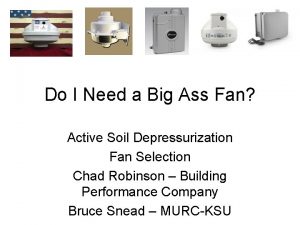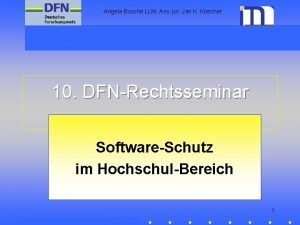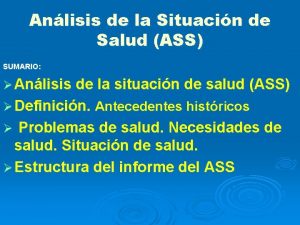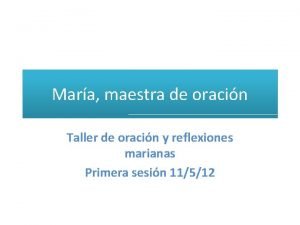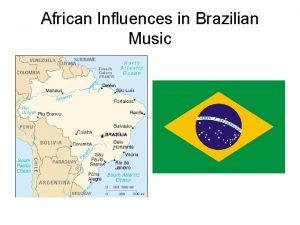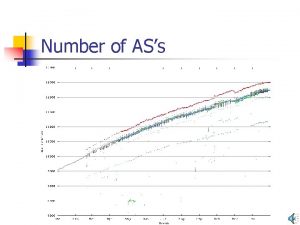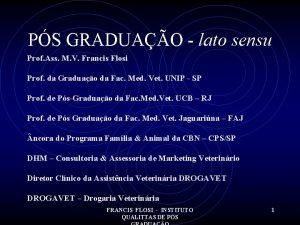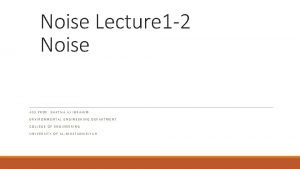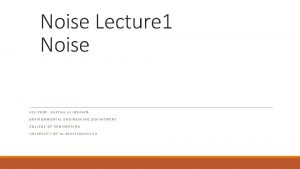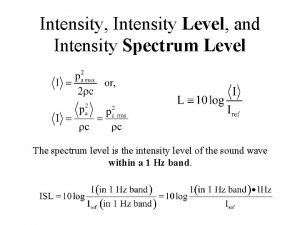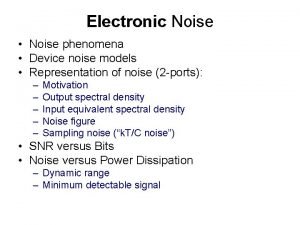Noise Lecture 1 3 NoiseSound Intensity ASS PROF








- Slides: 8

Noise Lecture 1 -3 Noise-Sound Intensity ASS. PROF. SHATHA AJ IBRAHIM ENVIRONMENTAL ENGINEERING DEPARTMENT COLLEGE OF ENGINEERING UNIVERSITY OF AL-MUSTANSIRIYAH

. 6 Sound Intensity and Sound Power The sound power flowing per unit area, in a given direction, easured over an area perpendicular to the direction of flow, its nits are W/m 2, Symbolically, the sound intensity is then I=W/A Where I= sound intensity (W/m 2) W= acoustical sound power of the source (W) A= surface area (m 2), for a point source, the areas over hich sound power distributes are concentric spheres with an ncreasing radius and therefore an increasing area of 4πr^2 also, it can used the equation below to calculate Sound Intensity: I=P^2/ρc Where P= mean square sound pressure (Pa 2) ρ= density of medium (kg/m 3) c= speed of sound (m/sec)

the term (ρc) is known as the acoustic impedance ( is a basically a easure of the resistance a fluid or material medium gives to the ropagating of sound waves, it is the product of the speed of ound in the medium and its density), in the air ρc =429 rayls (rayl =kg/m 2. sec).

. 7 What is a decibel? The decibel (d. B) is used to measure sound level, but it is also widely sed in electronics, signals and communication. The d. B is a logarithmic ay of describing a ratio. The ratio may be power, sound pressure, oltage or intensity or several other things. The reference value in sound levels corresponds to minimum audible ound to the average human ear at 1000 Hz.

. 8 Sound Pressure Level, Sound Intensity Level, Sound Power evel Sound Pressure level measured on a d. B scale: SPL=10 log�〖(P_rms/P_o )^2 〗=20 log�〖P_rms/P_o 〗 Where SPL= Sound Pressure Level (d. B) Prms= Root mean square sound pressure (Pa) Po= Reference value (20× 10 -6 Pa) SIL=10 log�〖I/I_o 〗 Where SIL= Sound Intensity Level (d. B) I = Sound intensity (W/m 2) Io= Reference value (10 -12 W/m 2)

SWL=10 log�〖W/Wo 〗 Where SWL=Sound Power Level (d. B) W= Sound power (W) Wo= Reference value (0 -12 W). 9 Some Common Sounds Table below illustrate sound pressure and sound pressure level or some common sound.


Notes: A change in level of <1 d. B is not predictable A change in level of 3 d. B is just predictable A change in level of 5 d. B is clearly predictable A change in level of 10 d. B is twice as load Zero d. B level does not mean an absence of sound , it merely implies that the level s equal to the reference value. . 10 Addition of Sound Pressure Level and Sound Power Level In most industrial environments, sound is emitted from than one source r at different frequencies, so, the cumulative or overall or total SPL can e calculated from this equation: 〖SPL〗_t=10 log∑_(i=1)^n▒〖 10〗^(〖SPL〗_i⁄10) When many sources have the same SPL, this equation can be used: Increase in d. B level =10 log (N) Where N=Number of sources and total SWL can be calculated by: 〖SWL〗_t=10 log∑_(i=1)^n▒〖 10〗^(〖SWL〗_i⁄10)
